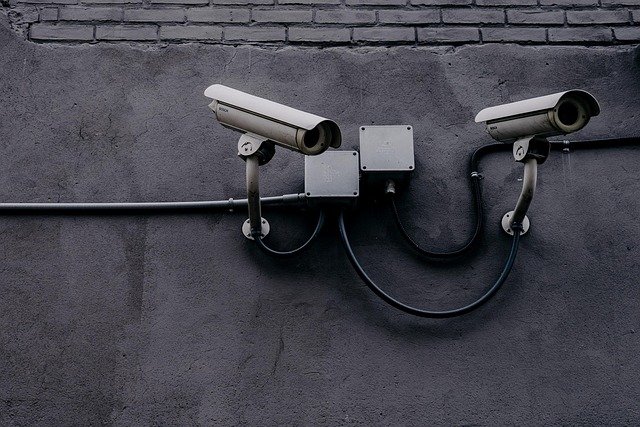Smart Home Security: Protecting Your Haven with Modern Technology
In an era where technology permeates every aspect of our lives, home security has undergone a remarkable transformation. Gone are the days when a simple lock and key were sufficient to protect our homes. Today, smart home security systems offer a comprehensive, interconnected approach to safeguarding our most precious assets. These advanced systems not only deter intruders but also provide homeowners with peace of mind through real-time monitoring and control. Let's explore how modern technology is revolutionizing home security and why it's becoming an essential part of the smart home ecosystem.

The heart of a smart home security system is its ability to communicate. When a sensor is triggered, it instantly alerts the homeowner and, in many cases, a professional monitoring service. This immediate response capability significantly reduces the window of opportunity for intruders and increases the chances of preventing a break-in or catching perpetrators in the act.
How do surveillance cameras enhance home security?
Surveillance cameras are a cornerstone of modern home security systems. These devices serve multiple purposes, acting as both a deterrent to potential intruders and a means of capturing evidence in the event of a break-in. Modern smart cameras offer features such as high-definition video, night vision, and wide-angle lenses to ensure comprehensive coverage of your property.
One of the most significant advantages of smart surveillance cameras is their ability to stream live video to your smartphone or tablet. This feature allows homeowners to check in on their property at any time, from anywhere in the world. Many systems also incorporate two-way audio, enabling users to communicate with visitors or deter potential intruders remotely.
Advanced cameras can even utilize artificial intelligence to distinguish between humans, animals, and vehicles, reducing false alarms and providing more accurate notifications. Some models also offer facial recognition technology, allowing the system to identify familiar faces and alert you to unknown individuals on your property.
What types of sensors are used in home security systems?
Sensors play a crucial role in creating a comprehensive security net around your home. There are several types of sensors commonly used in smart home security systems:
-
Motion sensors: These devices detect movement within a specific area and can trigger alarms or notifications.
-
Door and window sensors: These magnetic sensors alert you when a door or window is opened unexpectedly.
-
Glass break sensors: Designed to detect the sound frequency of breaking glass, these sensors add an extra layer of protection.
-
Environmental sensors: While not directly related to intruder detection, sensors for smoke, carbon monoxide, and water leaks can protect your home from other dangers.
-
Pressure sensors: These can be placed under carpets or mats to detect footsteps or movement in specific areas.
The integration of these various sensors creates a comprehensive security web that can detect and respond to a wide range of potential threats. When combined with smart home automation, these sensors can also trigger actions like turning on lights or locking doors when unusual activity is detected.
How does smart home integration enhance security?
Smart home security systems don’t operate in isolation; they’re often part of a larger smart home ecosystem. This integration allows for enhanced functionality and automation that goes beyond simple security measures. For example, smart lighting can be programmed to mimic occupancy patterns when you’re away, deterring potential burglars. Smart thermostats can detect unexpected temperature changes that might indicate a fire, while smart smoke detectors can automatically shut off HVAC systems to prevent smoke from spreading.
Moreover, voice assistants like Amazon Alexa or Google Assistant can be integrated with your security system, allowing you to arm or disarm your system, check camera feeds, or lock doors using voice commands. This seamless integration not only enhances security but also improves overall convenience and home management.
What are the key features to look for in a home security system?
When choosing a smart home security system, there are several key features to consider:
-
Professional monitoring: While self-monitoring is an option, professional monitoring services provide 24/7 coverage and can alert authorities in case of an emergency.
-
Mobile app control: A user-friendly mobile app is essential for remote monitoring and control of your security system.
-
Smart home compatibility: Ensure the system can integrate with other smart home devices you own or plan to purchase.
-
Battery backup: In case of power outages, a battery backup ensures your system remains operational.
-
Two-way audio: This feature allows you to communicate with visitors or potential intruders through your security cameras or doorbell.
-
Customizable alerts: The ability to set specific triggers and notification preferences helps reduce false alarms and keeps you informed of important events.
| Provider | Key Features | Estimated Monthly Cost |
|---|---|---|
| SimpliSafe | DIY installation, professional monitoring, cellular backup | $15 - $25 |
| Ring Alarm | Affordable, integrates with Amazon Alexa, optional professional monitoring | $10 - $20 |
| ADT | Professional installation, 24/7 monitoring, home automation integration | $30 - $60 |
| Vivint | Custom system design, professional installation, advanced home automation | $40 - $70 |
| Abode | Flexible monitoring options, extensive third-party device compatibility | $6 - $20 |
Prices, rates, or cost estimates mentioned in this article are based on the latest available information but may change over time. Independent research is advised before making financial decisions.
Smart home security systems have revolutionized the way we protect our homes and loved ones. By leveraging advanced technology, these systems offer unprecedented levels of control, monitoring, and peace of mind. From high-definition surveillance cameras to intelligent sensors and seamless smart home integration, modern security solutions provide a comprehensive approach to safeguarding your property. As technology continues to evolve, we can expect even more innovative features and capabilities in the realm of home security, further enhancing our ability to create safe and secure living environments.






